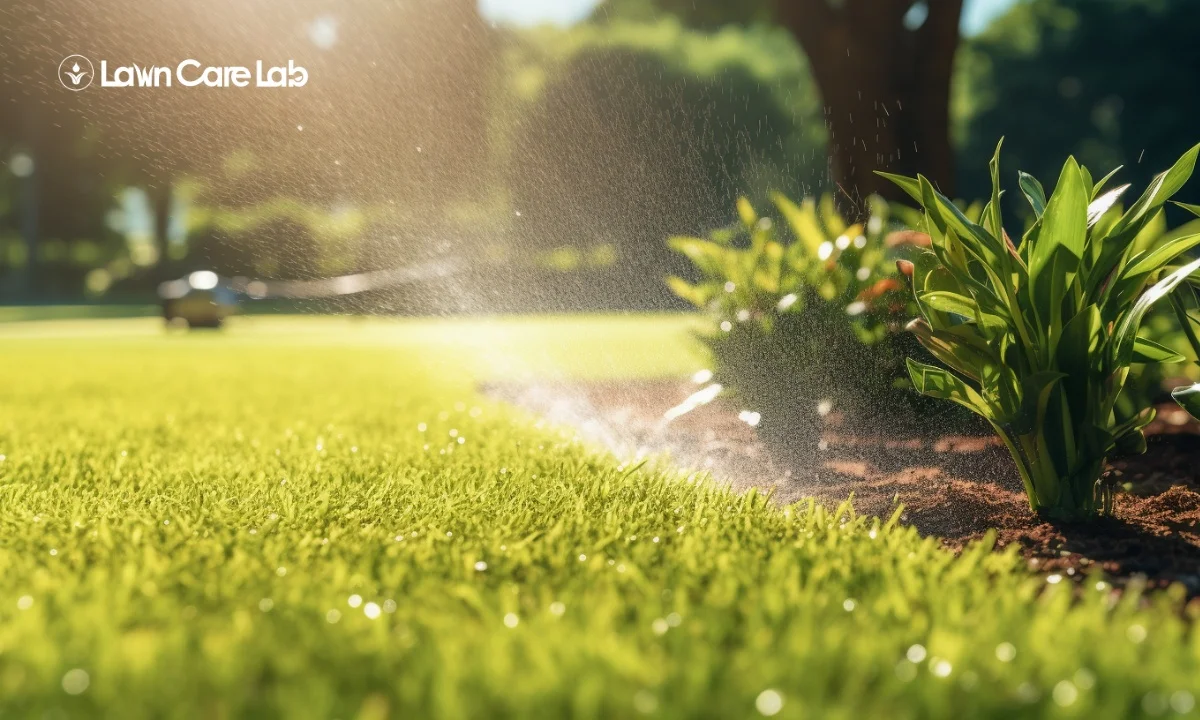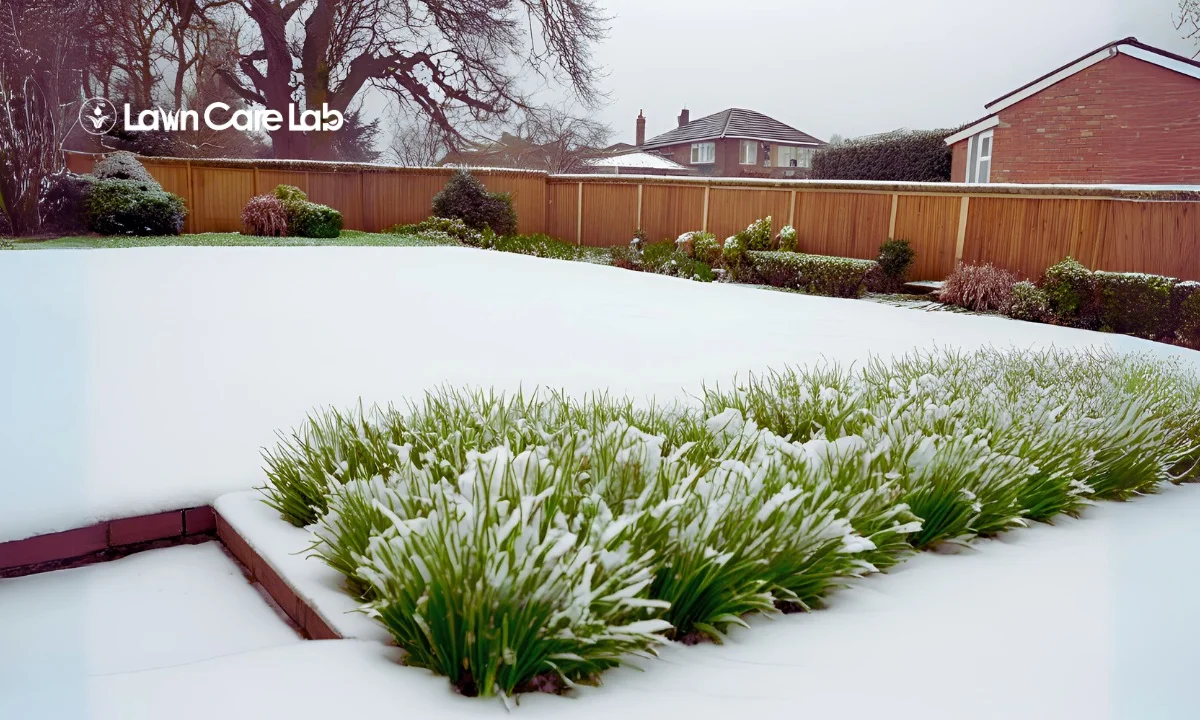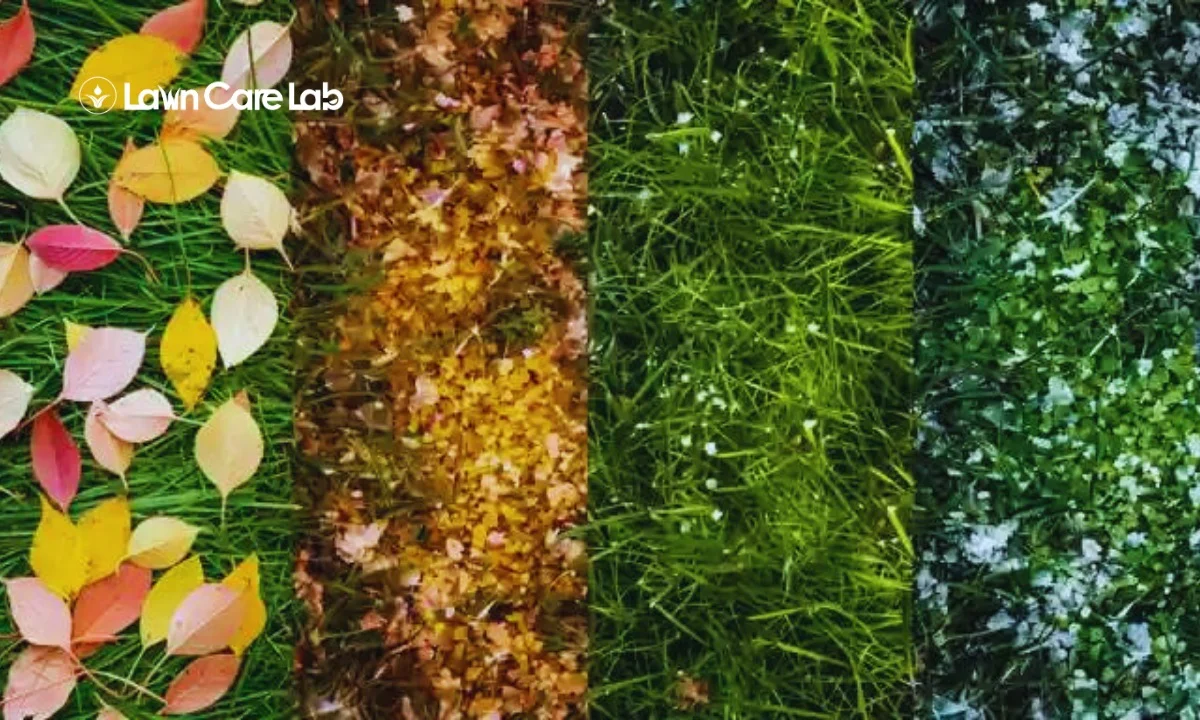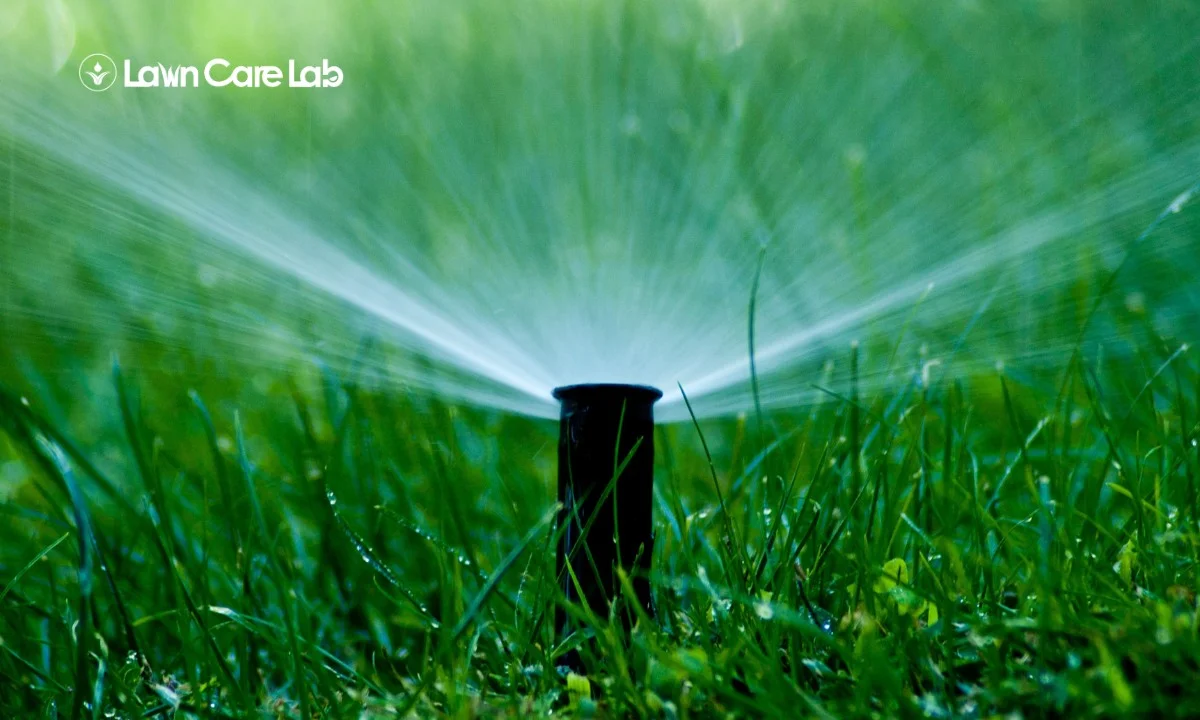Do you want your lawn to stay lush and green during dry weather?
It can be challenging, but with the right strategies, you can keep your grass healthy no matter what Mother Nature throws.
From choosing the right type of grass to using smart watering techniques, this article will show you how to keep your lawn in top condition.
Highlights
- Adjust the watering schedule and irrigation techniques to conserve water.
- Choose drought-tolerant and heat-resistant grass varieties.
- Implement lawn maintenance practices like mulching, aerating, and soil enrichment.
- Consider alternative landscaping options like artificial grass or native plants.
Table of Contents
Keeping Your Lawn Lush and Green During Dry Weather Conditions
Adjust your watering schedule and choose the right grass varieties for dry climates to ensure your grass survives the hot, dry days ahead.
Plus, with creative landscaping techniques, maintain your lawn during hot weather and abide by water restrictions when necessary.
Adjusting Your Watering Schedule and Irrigation for Drought
To start, divert runoff away from the lawn with mulching methods such as:
- Lawn aeration.
- Mulching material.
- Irrigation systems.
Second, water deeply but infrequently, early in the morning or evening when evaporation is low.

Finally, invest in a smart irrigation controller to adjust the sprinkler system according to local weather changes. This will help save time, money, and water while keeping your lawn lush and green in challenging conditions.
Choosing the Right Grass Varieties for Dry Climates
Choosing the right grass varieties for dry climates can be challenging, but investing in drought-tolerant and heat-resistant seeds and strains is essential.
This will help maintain a lush, green lawn while mitigating water usage.
Buffalo and Bermuda grasses are two great options that are both tolerant of drier conditions.

Transitioning to warm-season grasses can also benefit your lawn in hot, dry weather.
Another option is using alternative options such as clover or native plants. These can provide an innovative approach to maintaining a beautiful lawn in dry climates.
To maximize the success of your chosen grass type, it’s important to incorporate dormant seeding with mulching methods, regular lawn aeration, and soil enrichment.
Maintaining Lawns During Hot, Dry Weather
Maintaining a summer lawn in hot, dry weather can be tricky, but with the right approach, you’ll have a lush landscape that doesn’t break the bank.
| Resilient Grasses | Mulching Tips | Efficient Watering |
|---|---|---|
| Choose grasses | Mow high | Deep infrequent |
| adapted to your | Leave clippings | waterings |
| climate |
You can also help your lawn stay healthy by aerating to improve water penetration and using mulch mowing to retain moisture.
Adjusting your fertilizer schedule for summer is also important, as too much nitrogen can burn grass in arid conditions.
Finally, soil amendments like compost will help plants retain moisture more effectively.
With these tips, you’ll have a beautiful garden that’s resilient and well-adapted to its environment!
Creative Landscaping Techniques for Dry Conditions
When landscaping in arid climates, you can use several creative techniques.
One option is to focus irrigation on priority areas while allowing non-essential spots to go dormant.
Another idea is to incorporate hardscapes like rocks and gravel, which require less water.
Additionally, using drought-resistant plants and shrubs can help conserve water. Artificial grass is another option to consider.

To maintain a healthy lawn in dry conditions, there are several practices you can follow:
- Mulching techniques can help conserve soil moisture while aerating the soil improves water absorption.
- Fertilizing with a low nitrogen blend is recommended, as it helps reduce water requirements.
- Choosing drought-resistant plants is also crucial.
- Finally, implementing water conservation practices is essential for maintaining a thriving landscape in arid climates.
By incorporating these tips and strategies, you can create an attractive landscape that will thrive despite hot temperatures.
When to Water Restrictions Force Reduced Lawn Watering
When water restrictions force reduced lawn watering, you must consider strategic solutions to ensure your landscape remains attractive and survives the dry conditions.
Drought-resistant plants can replace traditional grasses in high-traffic areas, while mulch watering can help retain moisture for longer periods.
Automated irrigation systems may be a more efficient solution than manual sprinklers, and soil aeration helps promote root growth.
Finally, soil amendments like compost or fertilizers should be added to reduce stress on the lawn during dry days.
Conclusion
You don’t have to give up on your lawn during dry weather. You can keep your grass healthy and green by following these simple tips.
- Water deeply and infrequently.
- Mulch in the summer months.
- Fertilize when needed.
- Mow correctly.
- Aerate regularly.
FAQs on Lawn Care in Dry Weather
Should I water my lawn every day during a drought?
Is it better to keep grass long or short in drought?
Should you cut the grass when it’s hot and dry?
Should I stop mowing my lawn in a drought?
Will grass come back after drought?
Should I mow if it hasn’t rained?
How do I know if my lawn needs more water?
- How to Create a Lawn Care Schedule for Southern Climates - October 30, 2024
- How to Use Compost Tea to Boost Lawn Growth and Soil Health - October 23, 2024
- The Best Grasses for Saltwater-Exposed Lawns: Coastal Lawn Care - October 17, 2024




